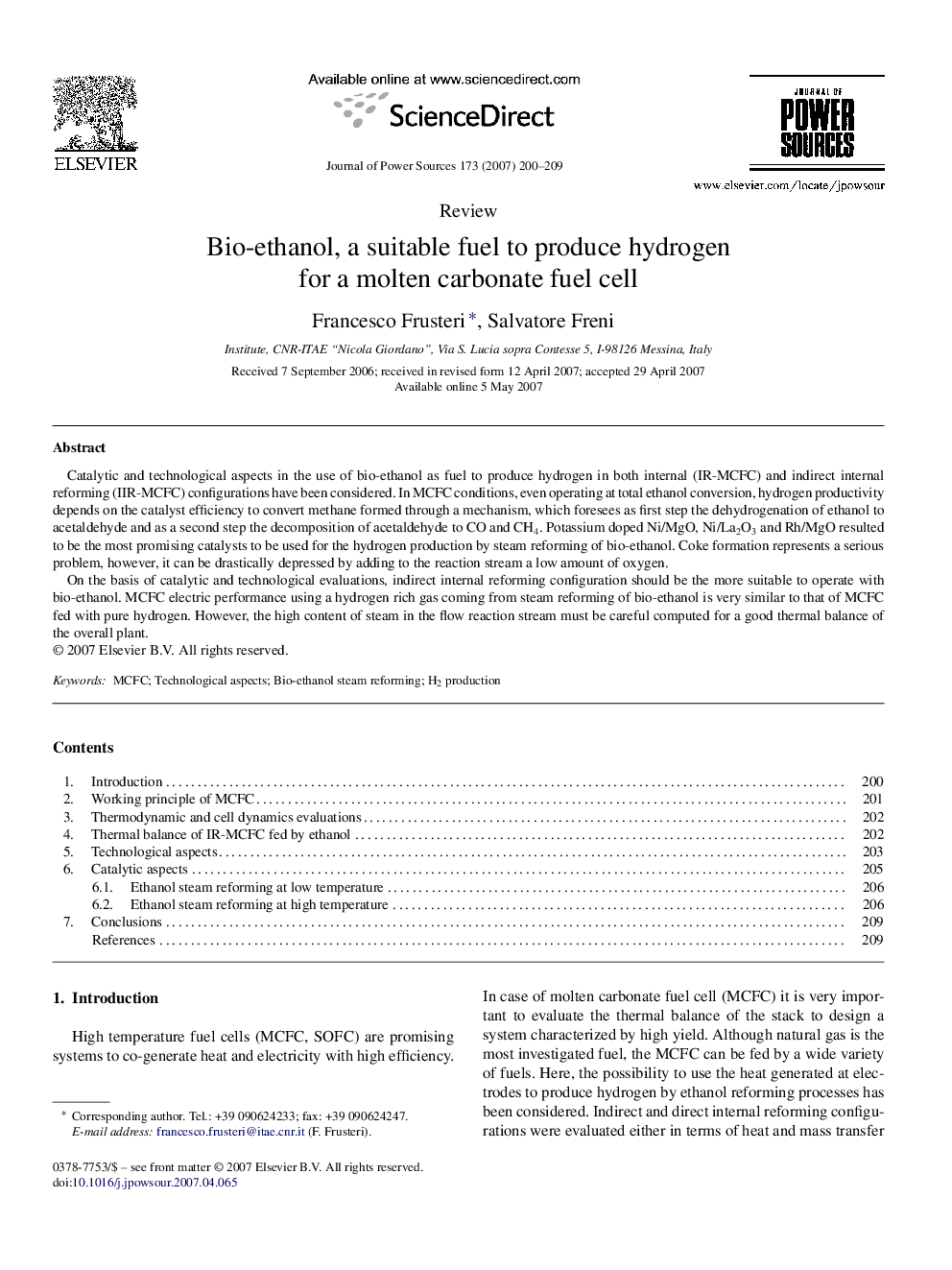| Article ID | Journal | Published Year | Pages | File Type |
|---|---|---|---|---|
| 1294888 | Journal of Power Sources | 2007 | 10 Pages |
Catalytic and technological aspects in the use of bio-ethanol as fuel to produce hydrogen in both internal (IR-MCFC) and indirect internal reforming (IIR-MCFC) configurations have been considered. In MCFC conditions, even operating at total ethanol conversion, hydrogen productivity depends on the catalyst efficiency to convert methane formed through a mechanism, which foresees as first step the dehydrogenation of ethanol to acetaldehyde and as a second step the decomposition of acetaldehyde to CO and CH4. Potassium doped Ni/MgO, Ni/La2O3 and Rh/MgO resulted to be the most promising catalysts to be used for the hydrogen production by steam reforming of bio-ethanol. Coke formation represents a serious problem, however, it can be drastically depressed by adding to the reaction stream a low amount of oxygen.On the basis of catalytic and technological evaluations, indirect internal reforming configuration should be the more suitable to operate with bio-ethanol. MCFC electric performance using a hydrogen rich gas coming from steam reforming of bio-ethanol is very similar to that of MCFC fed with pure hydrogen. However, the high content of steam in the flow reaction stream must be careful computed for a good thermal balance of the overall plant.
